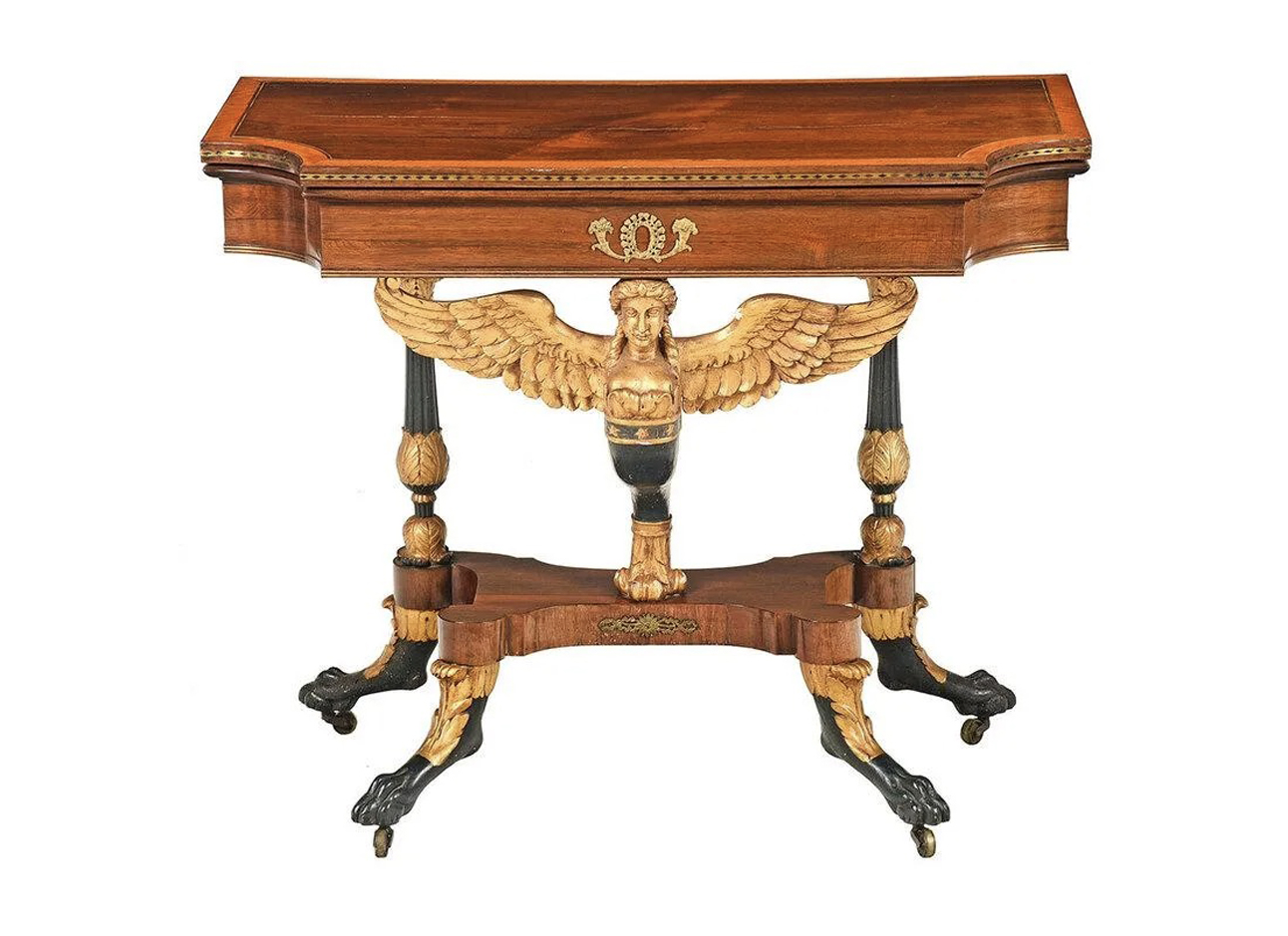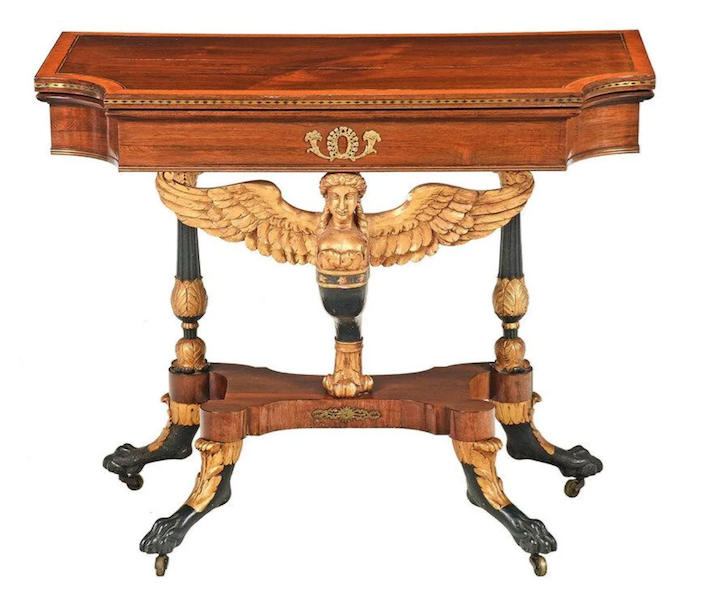
NEW YORK — Many people would consider $10,000 or $20,000 a steep price for an antique table. But if that same table boasts a provenance to 18th-century American furniture artisan Duncan Phyfe, it could command $100,000 or more.
Coming to America from Scotland in 1784 as a poor immigrant, Duncan Phyfe’s story is very much the tale of New York City itself, where immigrants came to seek better opportunities. Thanks to hard work and an eye for good design and proportion, the talented Phyfe became the top New York City cabinet maker in the early 1800s.
Phyfe rarely signed his pieces, and he employed a large cadre of artisans in his workshop to execute his designs. His Neoclassical-style furniture was widely admired and imitated by some of his competitors. But those who are well-schooled in the details of Phyfe’s body of work can recognize his distinctive style elements. Alternatively, if a piece of furniture attributed to him has a provenance that extends back to those who originally commissioned the piece, such as a bill of sale or the family’s name in Phyfe customer records, that exponentially increases its value.
A fine example is a classical gilt and rosewood caryatid card table with satinwood banding, brass inlaid edge and vert antique paw feet that attained $130,000 plus the buyer’s premium in September 2020 at Brunk Auctions. Attributed to Duncan Phyfe and dating to 1815-1820, the ornate table is depicted in McInnis and Leath’s 1996 book Beautiful Specimens, Elegant Patterns: New York Furniture for the Charleston Market, 1810-1840. In this book, McInnis and Leath say that this table is one of a pair that passed down within the prominent Ravenel-Frost family of Charleston, South Carolina. The table is also closely related to other tables attributed to Phyfe that were formerly in a major museum collection.

According to the Metropolitan Museum of Art in New York City, which mounted the 2011-12 exhibition Duncan Phyfe: Master Cabinetmaker in New York, Phyfe’s “personal style, characterized by superior proportions, balance, symmetry, and restraint, became the New York local style.” Typically embodying straight lines and delicate features such as skinny tapered legs, his furniture was mostly made from hardwoods such as mahogany and walnut. He was often inspired by ancient Grecian themes, and a popular motif was the lyre. This harp-like stringed instrument is familiar to Greek mythology scholars and fans of the current Broadway hit, Hadestown, where Orpheus plays the lyre to woo Eurydyce as well as bargain his way out of the underworld. A circa-1815 set of six lyre-back Klismos chairs attributed to Duncan Phyfe earned $60,000 plus the buyer’s premium in September 2020 at Brunk Auctions. Like the aforementioned card table, this set of chairs was made for a Charleston family (the Middletons). Each chair has a scrolled back with a figured mahogany tablet crest atop a delicately carved lyre splat. Phyfe developed a strong market in sophisticated cities such as Charleston, and well-to-do families up and down the East Coast coveted his work from about 1810 to 1840. ‘“This rare surviving set of six is distinguished from the other known published examples by its very finely detailed leaf and rosette carving on the lyre backs, quite distinct from the leaf carving typically found on Phyfe chairs of this period,” according to Brunk Auctions.
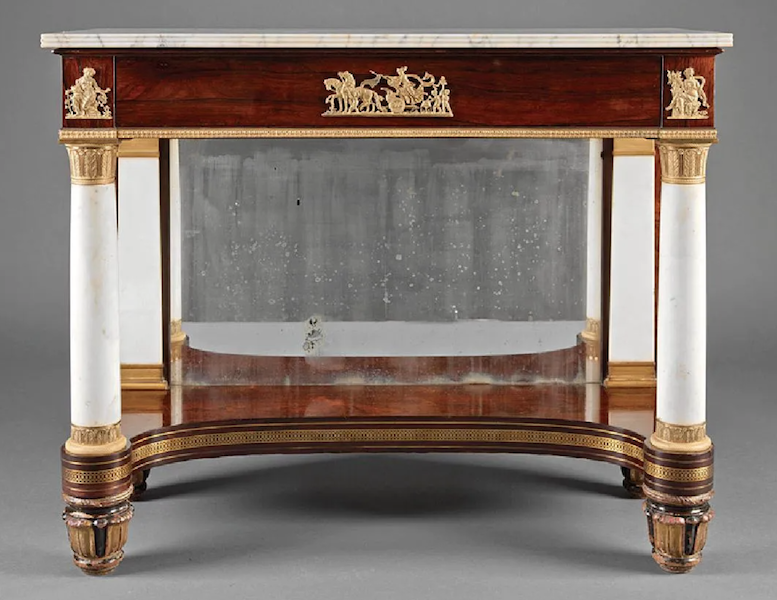
His tables were especially ornamental and a staple in many affluent homes. An early 19th-century marble and rosewood pier table attributed to Phyfe brought $47,500 plus the buyer’s premium in April 2017 at Neal Auction Company. Designed to be sited in an elegant parlor between two windows, this pier table ranks among his best work. The mirror beneath the marble top would reflect light back into the room — a useful and crucial feature before the advent of electric lighting — and the white columns also added a touch of lightness. The table is further notable for the use of exotic rosewood veneers, ormolu mounts, stamped brass borders and carved foliate feet, which are similar to other well-documented work of his.
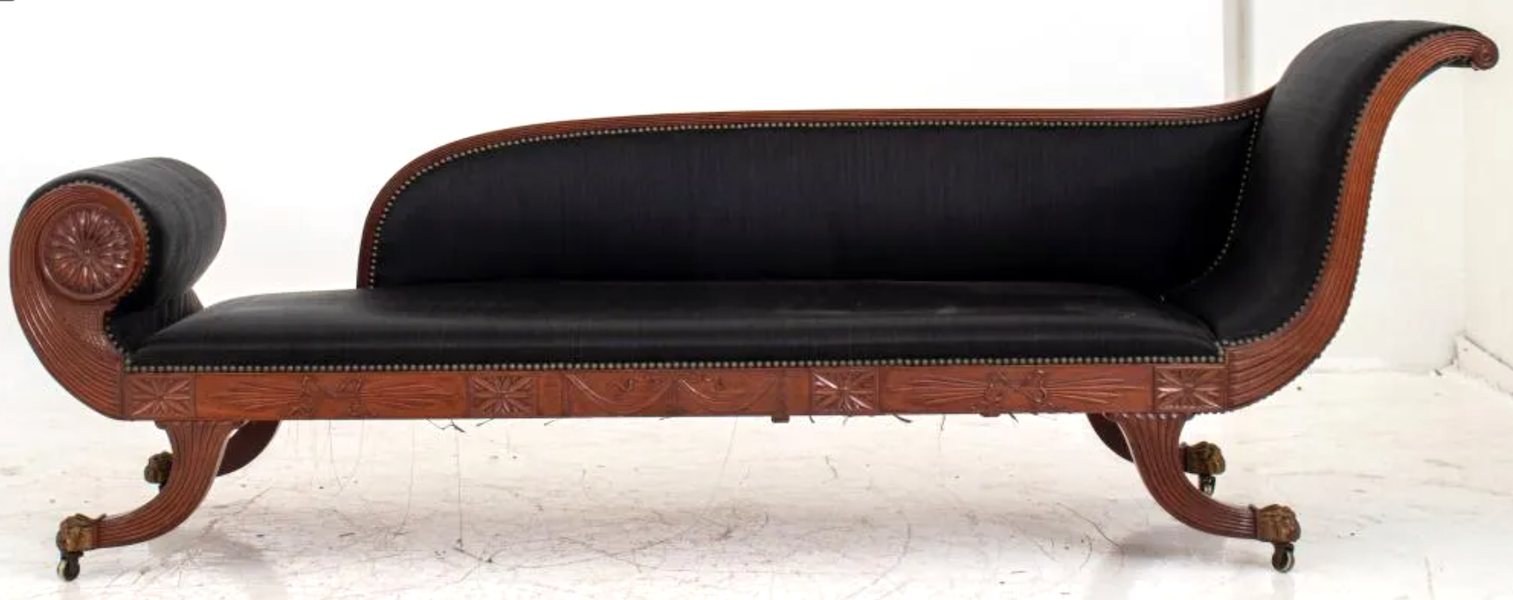
Chief among his most desirable furniture forms such as tables, chairs, beds and sideboards was the sofa. He designed several styles for this form and a popular version was his Grecian-inspired sofa, or recamier, having scrolled armrests at opposite ends. An example of this form, boating sleek and curvy lines with dramatic carving on the mahogany is a Grecian-taste sofa, or recamier, which sold for $17,000 plus the buyer’s premium in September 2022 at Auctions at Showplace. This circa-1805 sleigh-form recamier, attributed to Phyfe’s workshop, has brass-nailed black horsehair upholstery set in a mahogany-reeded frame.
While many of his sofas had curvilinear styling, Phyfe also designed sofas that had angular and rectangular forms. This styling helped focus attention on the luxurious upholstery used in these pieces, such as in a circa-1820 classical parcel gilt and ormolu-mounted rosewood box sofa that earned $15,000 plus the buyer’s premium in January 2018 at Neal Auction Company.
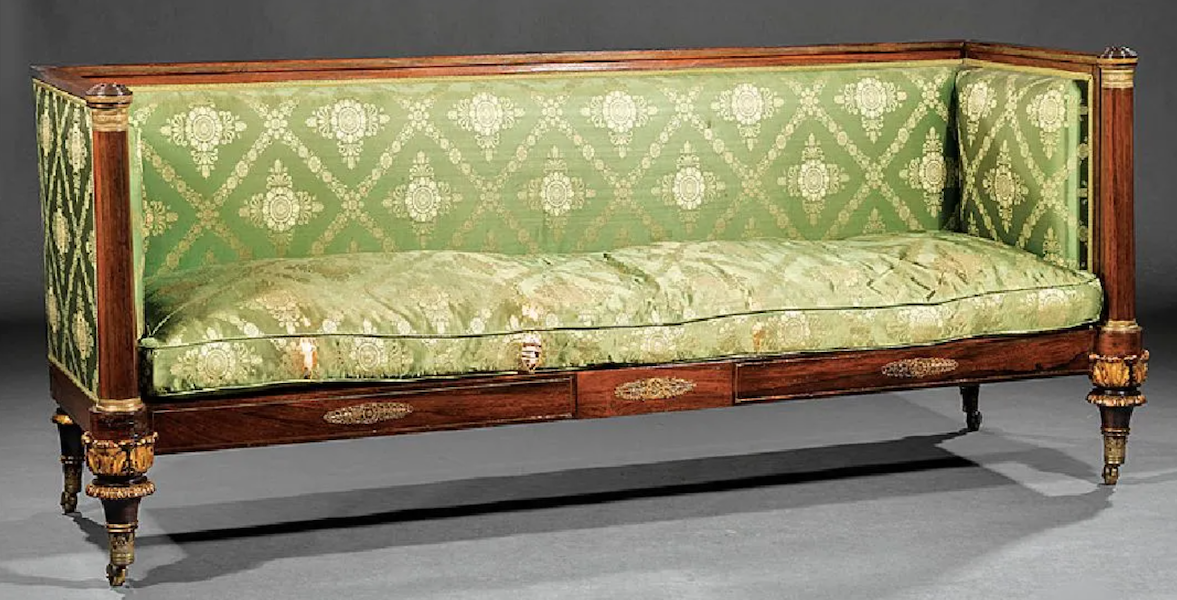
“The ‘Grecian’ box sofa, a form first used by New York cabinet maker Duncan Phyfe around 1820, is related to French Restoration and English Regency design,” according to Neal Auction Company’s catalog description, which added that this style is generally thought to be as part of the second phase of Phyfe’s career. The heavily ornamented Grecian style melding with the French Empire aesthetic is similar to a sofa in the collection of the Art Institute of Chicago.
Duncan Phyfe’s furniture embodied refinement and elegance. Of course, furniture tastes have changed many times since Phyfe’s heyday, and his works inevitably carry the marks of their 18th-century era. But good design and taste is always in style, and that fact ensures that pieces by Duncan Phyfe will continue to be sought after and cherished.


